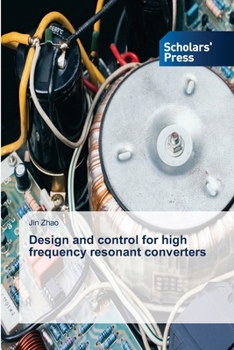Design and control for high frequency resonant converters
Compared with the traditional pulse width modulation (PWM) converter, the resonant converter can effectively reduce the switching loss, so that the operation frequency can be further improved. The higher operation frequency of the converter, the smaller the transformer, inductor, and capacitor. In addition, the smoothly changing waveform and the smaller rate of change of voltage and current also help to improve the electromagnetic compatibility of the resonant converter. However, the resonant converter requires a resonant network composed of a certain number of inductors and capacitors, which makes its analysis and design more complicated. By carefully designing the resonant network, the resonant converter can obtain good performance at or near an operating point, and it is difficult to obtain good performance under a wide range of input voltage and load conditions. In addition, the tolerance and aging problems of the resonant network also bring certain challenges to the design of the resonant converter.
Format:Paperback
Language:English
ISBN:3639863801
ISBN13:9783639863802
Release Date:March 2025
Publisher:Scholars' Press
Length:256 Pages
Weight:0.76 lbs.
Dimensions:0.6" x 6.0" x 9.0"
Customer Reviews
0 rating





